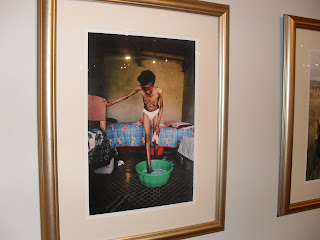



Indeed, no one should be alone in the fight against HIV/AIDS stigma and discrimination. After many years of HIV/AIDS research, it seems as if stigma will still dominate discussions on how to cope with the pandemic. The just opened HIV/AID arts exhibition at the Museum Africa in Newtown Johannesburg gives hope in the fight against HIV/AIDS stigma and discrimination and calls for the support of the treatment of those living with HIV/AIDS.
The keynote speaker in the opening of the sessions, Justice Cameron said people must work together to promote treatment and fight HIV/AIDS stigma and to reverse the idea of HIV/AIDS as an uncontrollable pandemic. He added that treatment is essential to bring life to those who are infected with HIV/AIDS and should be encouraged and promoted.
The exhibition was attended by people from all quarters of the South African community and will be on for the next couple of days. People are therefore called upon to attend in order to show support.
On the display, are marvelous pieces of artistic works including photographs, video and audio information containing real life experiences of people living with HIV/AIDS, those affected, including those that are coping with treatment, and how they are coping.
However, artistic the pieces displayed should have done much more in their representation of "the faces of HIV/AIDS" by shocasing the idea racial diversity. The photo gallery was heavily dominated with black faces men, women, young and old and they risked sending the wrong idea of AIDS in the minds of the public.
The idea of racialy profiling the disease ammounts to othering, blaming and alienation and further contributing to stigma. Other racial groups not profiled might may easily asume they are not vulnerable, a reality that may double their vulnerability.
The exhibition was no doubt a good ad promising one in the fight againist HIV/AIDS but it should have done more in terms of representation of different racial groups, how they are coping with HIV/AIDS infection and dealing with stigma and treatment. This would have made the event appear more genuine in its commitment to “treatment". Otherwise, there is no denying that the art exhibition, the first of its kind in Africa having originated from the US and exhibited across different continents, is worth seeing and will go a long way in supporting other HIV/AIDS initiatives already in place in Southern Africa and Africa as a whole.